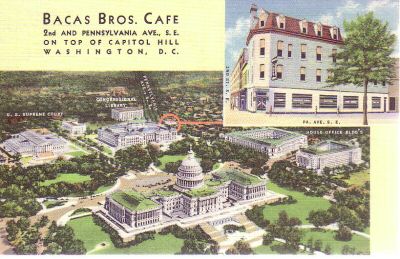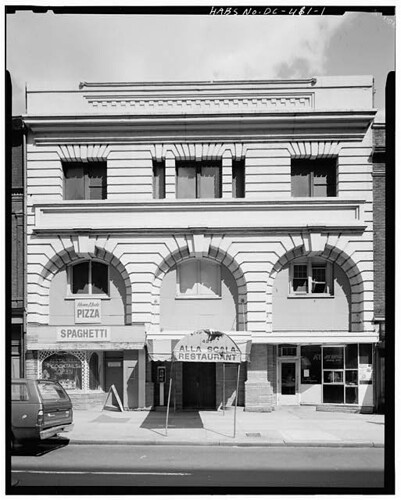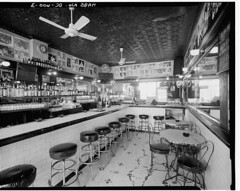Linking stories

This place was lost to the expansion of the Library of Congress.
I ran into a Post journalist yesterday and we talked for a bit about "Main Stream Media" -- I joked that all the Post writers are "legmen and legwomen" for my blog but also after reading the Post pretty closely for 20 years a lot of the stories aren't news to me anymore.
Yesterday's story, "Foreign Buyers Flock to D.C. Office Market," confirms my point that the property market in the Central Business District has been "reproduced" into an international market, with national and international property developers, owners, and financiers.
The problem this creates is that the property tax regime in the City is shaped and stoked by this, and it ends up overvaluing commercial property in neighborhood commercial districts in ways that overprice retail rents. Even though these properties aren't "signature" buildings with prestige addresses. From the article:
Last year, foreign investors bought nearly 10 times as much commercial office space in the District as they did in 2006. This year, they're buying at a similar clip, paying top dollar for properties with prestigious addresses and blue-chip amenities.
Buildings are selling for over $800/square foot. It wasn't that long ago when the price was in the $500 to $600 range... (And this should give you an idea about how to value increases in developable space awarded through zoning variances, exceptions, and bonuses. See "
I am about to do a little survey of maybe 5-10 commercial districts in a number of cities, with a base comparison to one district in DC, and I expect that for the amount of foot traffic and activity, the asking prices and prevailing rents in the D.C. neighborhood commercial district will be as much as double the others.
The funny thing is that the other commercial districts are much more successful.
I made my point to the journalist that I think they need more people with degrees in urban sociology on staff, so they can be better clued into systems, structures, processes, and groups.
Speaking of which, yesterday's Style section has a piece, "Satisfying a Craving For Someplace Familiar" about the "third place." From the article:
Over the past decade or so, settings like diners, coffeehouses and neighborhood bars have witnessed a new surge in popularity. Largely due to increased mobility and the changing nature of work, the relationships many of us form with the land, a neighborhood, family and friends are fragmented. Searching for ways to compensate, we frequently turn to public places where others congregate. Places like diners fill a void, becoming venues for newcomers and telecommuters alike to meet or make friends, be alone in the company of others, or simply to e-mail and keep up on news from home, whatever city, state or country that might be. "Third places" is what these hangouts have been tagged, a term that's caught on among academics, corporate CEOs, marketing firms and small business owners alike.

Alla Scala Restaurant, 425-429 11th Street NW. Photo: Historic American Building Survey.
In DC proper, many of the original diners and places like that, places that really did exist in the city at one time, have been demolished as small office buildings and such were demolished and redeveloped into much larger projects, as part of the reproduction of downtown into first a national property market and now an international property market. (See chapter four in Dream City about this process in DC in the 1980s.)
This process ended up closing the businesses and at the same time, repricing rents so that it becomes very difficult for diner type places to make it financially. (See the chapter on the need for a large stock of old buildings to maintain urban diversity in Death and Life of Great American Cities.)

Interior, restaurant 443 7th Street NW. Photo: Historic American Building Survey.
Labels: property tax assessment methodologies, urban sociology



0 Comments:
Post a Comment
<< Home